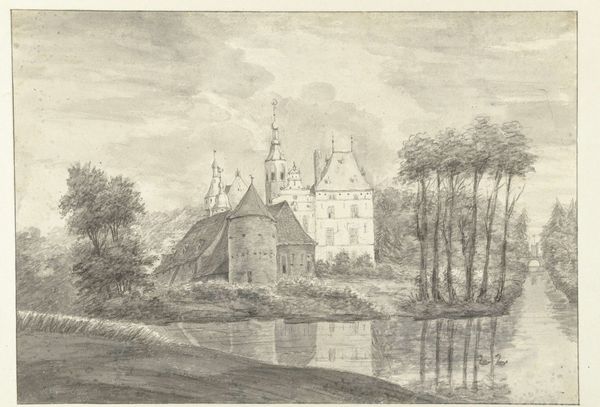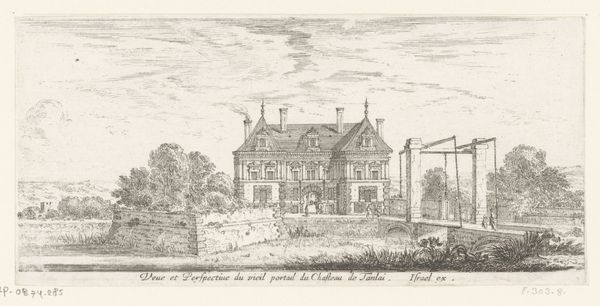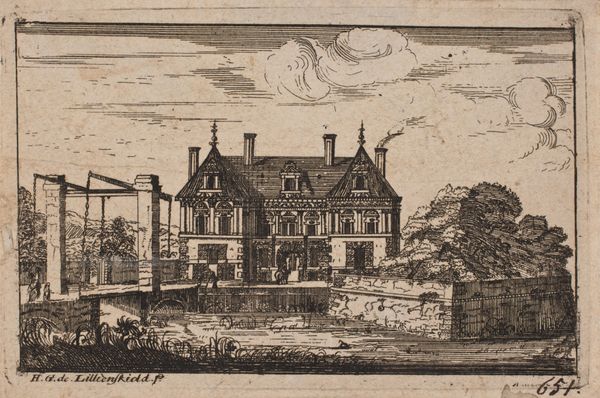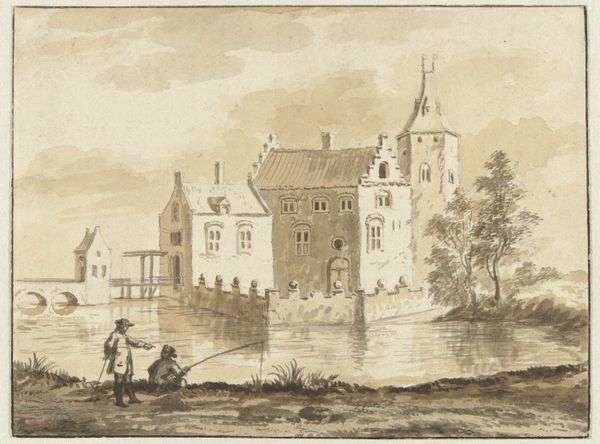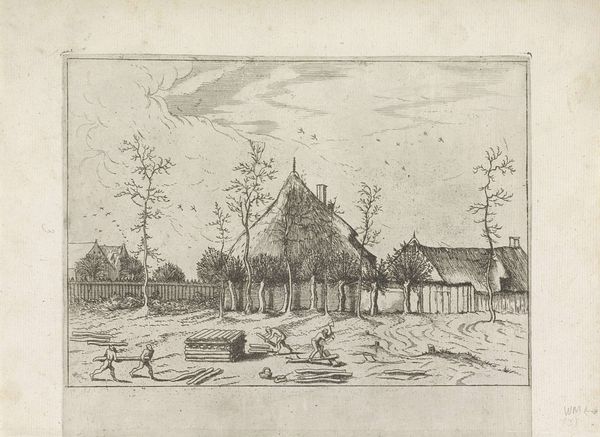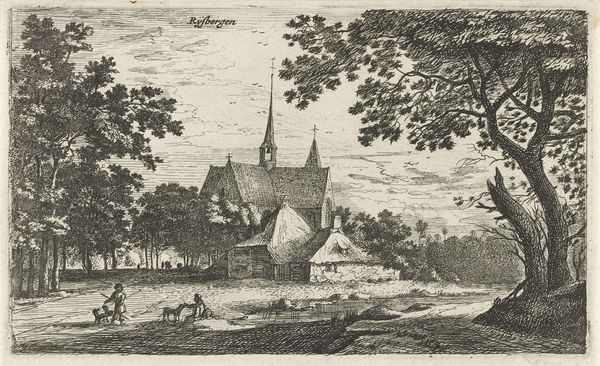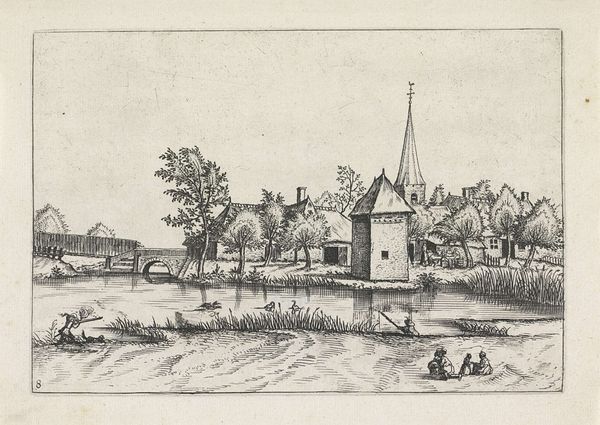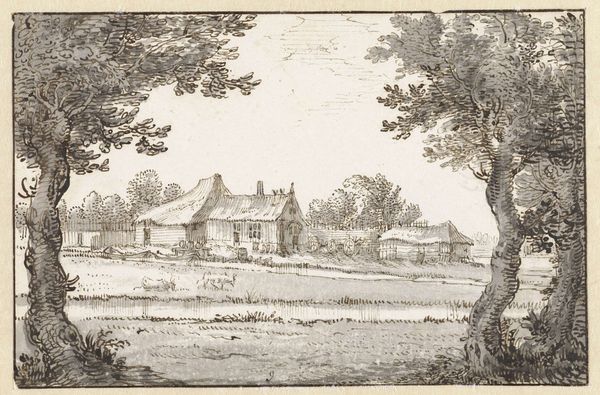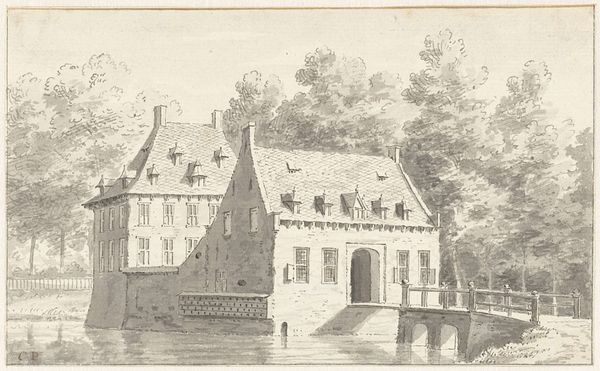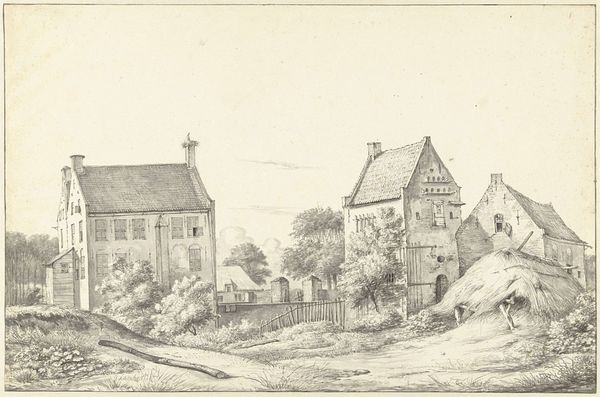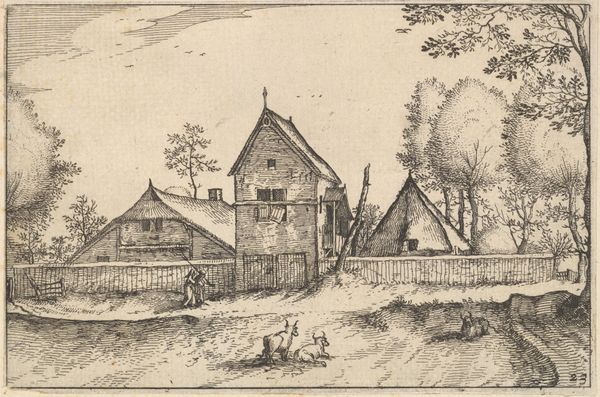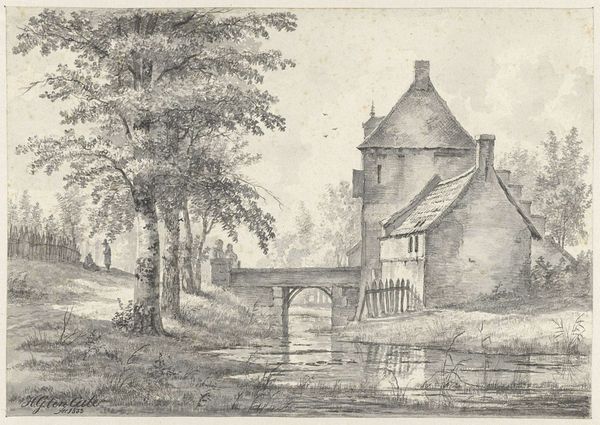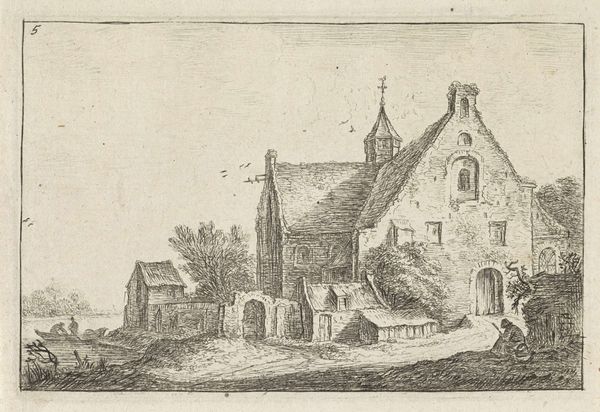
drawing, paper, ink
#
drawing
#
dutch-golden-age
#
landscape
#
paper
#
ink
#
genre-painting
Dimensions: height 125 mm, width 193 mm
Copyright: Rijks Museum: Open Domain
Editor: This is Jan de Beijer's "Het Huis de Wasserburg, Kleef," possibly from 1745, rendered in ink on paper. It's a detailed landscape drawing, but there's a stark contrast between the meticulously rendered house and the more gestural depiction of nature. What strikes you most about this piece? Curator: I'm immediately drawn to the inherent tension within the image itself, specifically how it reflects broader societal anxieties of the 18th century. De Beijer seems to be documenting the burgeoning power structures of the Dutch elite through their estates, but is it an endorsement or a critique? Editor: That's an interesting point! I hadn’t thought about it in terms of power dynamics. What makes you say that? Curator: The house, this seat of power, is centrally located, meticulously detailed. Consider what this represents during the rise of mercantile capitalism. The "genre painting" style, too, frames the narrative: Who benefits, and who is perhaps excluded from this idyllic scene? Note also the swans on the lake—traditionally symbols of nobility and privilege. Editor: So, even in a seemingly peaceful landscape, we can uncover social commentary? Curator: Absolutely. The very act of meticulously documenting this estate can be seen as reinforcing the social order, or, perhaps, subtly questioning it. De Beijer’s choice to focus on the architecture within a “natural” setting, and include genre elements also encourages viewers to reflect on land ownership, labor, and access. What did you make of the size of the estate and buildings depicted, compared to the human figures present? Editor: I see your point. It really puts their relative importance into perspective, maybe even suggesting the commoners had become subjugated or that their presence was simply deemed irrelevant at the time. Thanks. I'll certainly look at landscapes differently from now on. Curator: Precisely. Hopefully, you’ll appreciate how these visual choices can reflect deeper social and political realities of the time and think critically about why these houses of the powerful still stand, today.
Comments
No comments
Be the first to comment and join the conversation on the ultimate creative platform.
